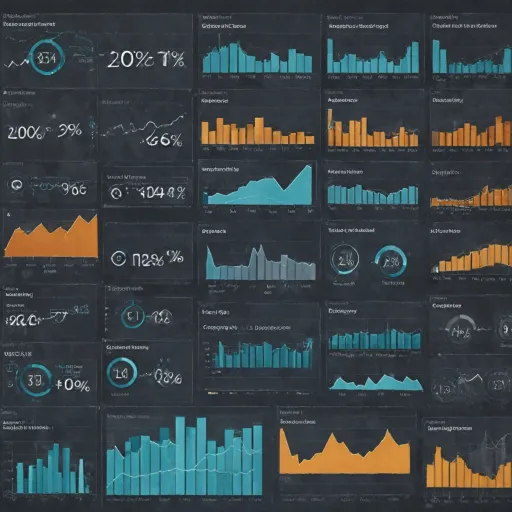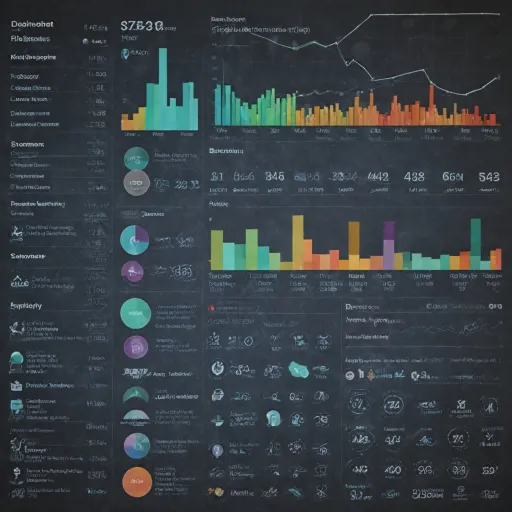
Understanding Skills Gap Analysis
What is Skills Gap Analysis?
Skills gap analysis serves as a vital process for HR professionals to identify the discrepancy between skills that employees currently possess and the skills needed to achieve business goals. This evaluation not only helps organizations pinpoint areas where employees might fall short, but also informs strategic decisions intended to boost overall performance and efficiency.
Conducting a skills gap analysis is essential for aligning the workforce with the company’s long-term objectives, ensuring that teams are equipped with the necessary skills and knowledge. A well-implemented gap analysis will help reveal the training opportunities and development areas that may be necessary to enhance employee skills and fill these gaps effectively.
How Does Skills Gap Analysis Benefit Organizations?
Skills gap analysis is an invaluable tool that saves time by steering the focus toward critical learning and development needs. When performed correctly, it can guide the planning and execution of employee training, ultimately contributing to the improvement of general skills and specific soft skills necessary for various roles.
This process also involves a thorough examination of data gathered from skills matrices and employee assessments. By comparing this data against an analysis template, HR professionals can craft a strategic plan to address the gaps identified, ensuring the alignment of skills with corporate goals.
The Role of Analysis Templates
To save time and enhance accuracy, many HR professionals leverage free templates and structured analysis templates during the process. These resources provide a clear framework for evaluating the current skills landscape within the organization. Utilizing a template aids in the breakdown of complex information, making it more manageable to conduct skills gap analysis efficiently.
When properly executed, these efforts not only highlight areas in need of improvement but also foster an environment of continuous learning and adaptability, essential for staying competitive in today's dynamic business landscape.
Components of an Effective Skills Gap Analysis Template
Key Elements to Consider
Crafting a thorough skills gap analysis requires a focus on specific components to help HR professionals effectively pinpoint areas for improvement. Here are a few key elements:- Skills Matrix: Develop a comprehensive skills matrix that outlines both the skills needed and the skills currently possessed by your employees. This provides a visual representation of gaps and helps align goals with strategic business objectives.
- Learning and Development Goals: Clearly outline learning and development goals tailored to each role within your organization. These goals should reflect both the technical and soft skills required to meet business goals.
- Data Collection: Utilize accurate and actionable data to map out where skill gaps currently exist. This step in the analysis process will involve gathering data from employee assessments, peer reviews, and performance evaluations.
- Analysis Template: An effective skills gap analysis template should include sections for identifying existing skills, areas for improvement, and potential learning opportunities. Free templates can save time by offering a structured approach to gap analysis.
Guiding the Analysis Process
The analysis template is a crucial tool in conducting skills gap analysis effectively. Here are a few pointers on how to utilize this tool to facilitate the process and overcome potential challenges:- Utilize Free Resources: Many free templates are available online, offering HR professionals a starting point. Customizing these to fit specific business goals can help streamline the analysis.
- Document the Process: Ensure your skills gap analysis template documents the method used to gather and process data, allowing for a clear understanding of how conclusions are drawn.
- Include Both Soft and Technical Skills: A comprehensive approach to skills gap analysis involves evaluating both types of skills. This makes sure employees are well-rounded and prepared to tackle diverse challenges at work.
- Consistency and Time: Consistently updating your skills gap analysis can lead to greater success in implementing long-term solutions. Working regularly with your template will help ensure that skills knowledge remains current and relevant.
Steps to Conduct a Skills Gap Analysis
Identifying Skills and Competencies
Conducting skills gap analysis is a multi-step process that requires a clear understanding of both the current capabilities of your employees and the skills needed to achieve your business goals. To begin with, identifying the general skills and competencies required for each role in your organization is essential. This information can be captured using a skills matrix, which serves as a visual representation of the skills knowledge across your team.Assessing Current Skills
Once you've mapped out the required skills, the next crucial step involves assessing the current skill levels of your employees. This helps in pinpointing skill gaps and areas for improvement. Consider utilizing a variety of methods, such as surveys, performance reviews, and direct observation, to gather accurate data on your team's abilities.Analyzing the Gap
With the data collected, the analysis stage allows you to compare the current skills of your employees against the skills needed. This helps you determine the extent of the skills gaps. Incorporating a skills gap analysis template will assist in organizing this information effectively and making it easier to identify where the most significant discrepancies lie.Setting Priorities
After identifying the gaps, prioritize which skill areas require immediate attention, aligning with your business goals. Engaging your team in this process ensures they understand how closing these skill gaps will benefit both their personal growth and the organization's success.Choosing the Right Solutions
Depending on the identified gaps, different solutions may be implemented. Options include organizing relevant training sessions, investing in learning development programs, or even hiring new talent to fill skill shortages. The goal is to leverage your resources to bridge these gaps efficiently, saving time and aligning with your company's objectives. For a deeper understanding of the implementation process to enhance your skills gap analysis journey, you can explore effective HR case management strategies, which will help streamline your efforts in managing employee development.Common Challenges in Skills Gap Analysis
Identifying Challenges in Skills Gap Analysis
The skills gap analysis process, while indispensable for aligning employees' competencies with business goals, presents a variety of challenges. Each stage, from utilizing the skills gap analysis template to implementing learning development strategies, is fraught with potential pitfalls that can hinder successful outcomes. This section delves into some common challenges you might encounter and offers insights on tackling them.- Data Accuracy and Completeness: One of the most pressing issues in a skills gap analysis is ensuring the accuracy and completeness of your data. Without precise data, identifying the current skill gaps or even general skills areas improvement can be misleading. It's crucial to maintain up-to-date records on employee skills and training history to perform a reliable gap analysis.
- Lack of Clear Objectives: A skills gap analysis must have clear goals tailored to the organization's needs, otherwise, it risks becoming an exercise in futility. Identifying the skills needed should directly support your business goals, providing a structured approach for both short-term and long-term planning.
- Time Constraints: Conducting skills gap analysis requires a significant time investment. Especially when working with a large workforce, the process can become time-consuming, making it tempting to rush or skip vital steps. However, taking the time to conduct a thorough analysis will ultimately save time and resources by pinpointing effective areas of improvement.
- Integrating Soft Skills: While technical skills are more easily quantifiable, soft skills often present a challenge in analysis. Despite this, skills such as communication, teamwork, and problem-solving are essential for any work environment. Consider using a skills matrix to weigh both soft and technical skills evenly in your analysis.
- Employee Engagement: Engaging employees in the process is crucial. Employees may view skills gap analysis as critique rather than an opportunity for growth. Framing the analysis in terms of personal development and career progression can help in gaining the buy-in necessary to accurately assess gaps and implement targeted training interventions.
Leveraging Data in Skills Gap Analysis
Harnessing Data Insights for Precise Identification
Integrating data insights effectively is paramount for accurately pinpointing skill gaps in your organization. By utilizing a combination of data sources—such as employee performance reviews, skills matrix assessments, and industry benchmarks—you'll form a comprehensive view of where the skill gaps lie. This process involves comparing the current skills of employees against the skills needed to achieve your business goals.Building a Data-Driven Approach
For an effective skills gap analysis, adopting a data-driven approach will help streamline the process of identifying and addressing skill deficiencies. Employing comprehensive analysis templates and skill gap analysis templates allows you to systematically capture critical data points for evaluation. Such templates ensure that you focus on both hard and soft skills, enabling you to mitigate potential gaps effectively.Utilizing Advanced Tools for Better Insights
Advanced analytics tools can significantly assist in your analysis efforts, helping you extract actionable insights swiftly and accurately. Leveraging such technology can save time and provide a clearer picture of training and development needs. Moreover, these tools help track learning development progress, ensuring that your employees are continuously improving their skills and knowledge.Aligning Data with Organizational Goals
Aligning your analysis with business goals is crucial in ensuring that your skills gap assessment leads to practical outcomes. By setting clear, measurable goals, the data you collect can directly influence how you mold training and learning programs to fill those gaps. This alignment guarantees that the skill enhancement strategies implemented are not just theoretical but are aligned with actual organizational needs.Continuous Monitoring and Adjustments
Continuous monitoring of data and frequent reassessment of skills gaps ensures that your organization stays on track with its goals. It's vital to remain agile, using data not only to address current gaps but to anticipate and prepare for future needs. Regular analysis helps ensure that your organization maintains a competitive edge by nurturing employees' general skills, ultimately leading to areas improvement and fostering an adaptable workforce.Implementing Solutions to Bridge Skills Gaps
Implementing Practical Solutions to Address Skill Gaps
Identifying skills gaps through a comprehensive analysis is only the beginning. The real challenge comes when HR professionals strive to implement solutions that effectively bridge these gaps. It's essential to develop a structured approach that aligns with your organization's goals and the specific skill needs of your employees. To start, utilize the data gathered from the skills gap analysis template to pinpoint which skills need the most urgent attention. You can categorize these into technical and soft skills, ensuring a balanced focus across all necessary areas. An effective strategy will help ensure that employees are not only technically proficient but also excel in communication, teamwork, and general skills. Here's a step-by-step process on how to implement these solutions efficiently:- Prioritize Training Initiatives: Utilize current data to identify the most critical learning and development programs that will address immediate needs. Implementing these training sessions will help bridge the skill gaps effectively.
- Leverage a Skills Matrix: Develop a skills matrix that plots out the skills knowledge across employees. This will offer a visual representation of strengths and areas for improvement, providing insights into where to target training resources.
- Customizable Training Plans: Develop customizable training paths for your employees, offering personalized learning experiences that cater to their unique needs. This approach will save time and maximize the impact of each training session.
- Monitor and Measure Progress: Implement a process to continuously measure the progress of the training initiatives and their impact on business goals. Use these insights to adapt future strategies, ensuring the skills gap continues to narrow over time.
- Facilitate Mentoring Programs: Encourage more experienced employees to mentor those who require help in specific areas. This can create a free flow of skills and knowledge within the workplace, reinforcing a culture of continuous learning and development.













